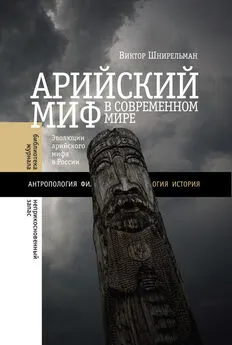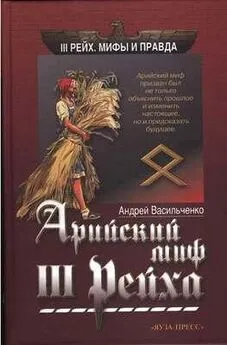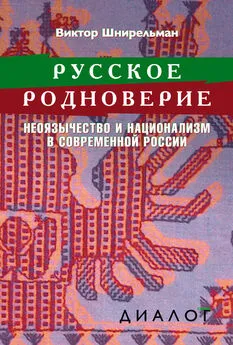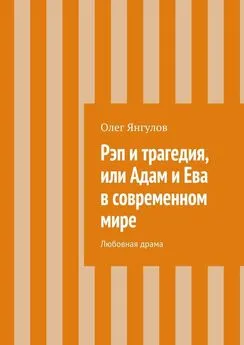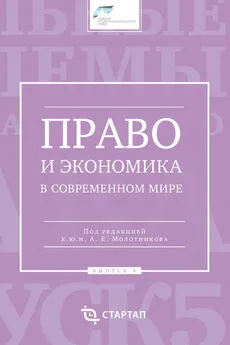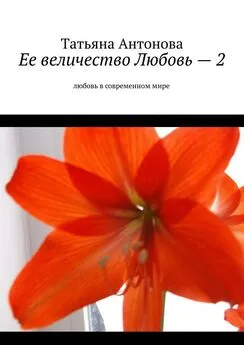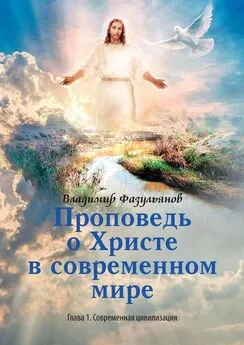Виктор Шнирельман - Арийский миф в современном мире
- Название:Арийский миф в современном мире
- Автор:
- Жанр:
- Издательство:Литагент «НЛО»f0e10de7-81db-11e4-b821-0025905a0812
- Год:2015
- Город:Москва
- ISBN:978-5-4448-0422-3
- Рейтинг:
- Избранное:Добавить в избранное
-
Отзывы:
-
Ваша оценка:
Виктор Шнирельман - Арийский миф в современном мире краткое содержание
В книге обсуждается история идеи об «арийской общности», а также описывается процесс конструирования арийской идентичности и бытование арийского мифа как во временном, так и в политико-географическом измерении. Впервые ставится вопрос об эволюции арийского мифа в России и его возрождении в постсоветском пространстве. Прослеживается формирование и развитие арийского мифа в XIX–XX вв., рассматривается репрезентация арийской идентичности в науке и публичном дискурсе, анализируются особенности их диалога, выявляются социальные группы, склонные к использованию арийского мифа (писатели и журналисты, радикальные политические движения, лидеры новых религиозных движений), исследуется роль арийского мифа в конструировании общенациональных идеологий, ставится вопрос об общественно-политической роли арийского мифа (германский нацизм, индуистское движение в Индии, правые радикалы и скинхеды в России).
Книга представляет интерес для этнологов и антропологов, историков и литературоведов, социологов и политологов, а также всех, кто интересуется историей современной России. Книга может служить материалом для обучения студентов вузов по специальностям этнология, социология и политология.
Арийский миф в современном мире - читать онлайн бесплатно ознакомительный отрывок
Интервал:
Закладка:
Jaffrelot, Ch. 1997. The idea of Hindu race in the writings of Hindu nationalist ideologues in the 1920s and 1930s: a concept between two cultures // P. Robb (ed.). The concept of race in South Asia, p. 327–354. Delhi: Oxford Univ. Press.
Jain, G. 1993. Limits of the Hindu Rashtra // K. Elst (ed.). Ayodhya and after. New Delhi: Voice of India.
Johnson, G. 1973. Provincial politics and Indian nationalism. Cambridge: Cambridge University Press.
Jones, K. W. 1976. Arya Dharm. Hindu consciousness in 19th-century Punjab. Berkeley: Univ. of California Press.
Jordan, Paul 2001. The Atlantis Syndrom. Gloucestershire: Sutton Publishing Limited.
Kak, S. C. 1989. Indus writing // The Mankind Quarterly, vol. 30, no. 1–2: 113–118.
Kak, S. C. 1992. The Indus tradition and the Indo-Aryans // The Mankind Quarterly, vol. 32, no. 3: 195–213.
Kaplan, Jeffrey 2002. The postwar paths of occult national socialism // Jeffrey Kaplan, Heléne Lööw (eds.). The cultic milieu: oppositional subcultures in an Age of Globalization. From Rockwell and Madole to Manson, p. 225–264. Walnut Creek: Altamira.
Karve, I. 1932. The Parasurama myth // Journal of the University of Bombay, July 1932, vol. 1, no. 1: 115–139.
Katz, Jacob 1986. The darker side of genius: Richard Wagner’s Anti-Semitism. Hanover: University Press of New England.
Keer, Dh. 1969. Lokamanya Tilak. Father of Indian freedom struggle. Bombay: Popular Prakashan.
King, Christine Elizabeth 1982. The Nazi state and the new religions: five case studies in non-conformity. N. Y.: The Edwin Mellen Press.
Korey, William 1995. Russian Antisemitism, Pamyat, and the Demonology of Zionism. Chur: Harwood Academic Publishers.
Kotani, Hiroyuki 2000. Historical formation of Hindu identity in relation to British colonial rule // H. Kotani, T. Fujii, F. Oshikawa (eds.). Fussing modernity: appropriation of history and political mobilization in South Asia, p. 5 – 20. Osaka: National Museum of Ethnology.
Kuzio, Taras 1998. Ukraine: State and nation building. London and New York: Routledge.
Lamberg-Karlovsky, C. C. 2002. Archaeology and language: The Indo-Iranians // Current Anthropology, vol. 43, no. 1: 63–88.
Laqueur, Walter 1993. Black hundred. The rise of the extreme right in Russia. N. Y.: Harper Collins.
Laruelle, Marlene 2005. Mythe aryen et rêve imperial dans la Russie du XIX-e siècle. Paris: CNRS-Éditions.
Laruelle, Marlene 2007. The return of the Aryan myth: Tajikistan in search of secularized national ideology // Nationalities papers, vol. 35, no. 1: 51–70.
Lefkowitz, Mary 1997. Not out of Africa. How Afrocentrism became an excuse to teach myth as history. N. Y.: Basic Books.
Lele, Jayant 2000. By faith alone: history as a weapon in the politics of hindutva // H. Kotani, T. Fujii, F. Oshikawa (eds.). Fussing modernity: appropriation of history and political mobilization in South Asia, p. 21–73. Osaka: National Museum of Ethnology.
Leube, Achim 1998. Zur Ur– und Frühgeschichtsforschung in Berlin nach dem Tode Gustav Kossinnas bis 1945 // Ethnographische-Archäologische Zeitschrift, Bd. 39: 373–427.
Lewis, Bernard 1986. Semites and Anti-Semites. An inquiry into conflict and prejudice. N. Y.: W. W. Norton & Company.
Lubin, Nancy 1981. Assimilation and retention of ethnic identity in Uzbekistan // Asian affairs, vol. 12, pt. 3. P. 277–285.
MacDonald, Kevin C., Frank Y. C. Hung, Harriet Crauford 1995. Prehistory as propaganda // Papers from the Institute of Archaeology, vol. 6: 1 – 10.
Madhivanan, R. 1994. Phonetic value of the Indus script. Adyar, Madras: Tamil Canror Peravai.
Maha Vira 1979. Maha Vira. Spring Glen, N. Y.: The Ukrainian Native Faith.
Mallory, James P. 1989. In search of the Indo-Europeans: language, archaeology and myth. London: Thames and Hudson.
Mallory, James P. 1997. The homelands of the Indo-Europeans // R. Blench, M. Spriggs (eds.). Archaeology and language I. Theoretical and methodological orientations, p. 93 – 121. London: Routledge.
Marchand, S. L. 1996. Down from Olympus. Archaeology and Philhellenism in Germany, 1750–1970. Princeton: Princeton Univ. Press.
Masaryk, Thomas G. 1968. Idealy humanitni. Praha: Melantrich.
McCann, W. J. 1990. “Volk und Germanentum”: the presentation of the past in Nazi Germany // P. Gathercole, D. Lowenthal (eds.). The politics of the past, p. 74–88. London: Unwin Hyman.
Menzel, Birgit 2012. Occult and esoteric movements in Russia from the 1960s to the 1980s // B. Menzel, M. Hagemeister, B. G. Rosenthal (eds.). The New Age of Russia. Occult and esoteric dimensions, p. 151–185. Berlin: Otto Sagner.
Misra, S. S. 1992. The Aryan problem: a linguistic approach. New Delhi: Munshiram.
Moscovici, Serge 1985. The age of the crowd. A historical treatise on mass psychology. Cambridge: Cambridge University Press.
Mosse, George L. 1966. The crisis of German ideology. Intellectual origins of the Third Reich. London: Weidenfeld and Nicolson.
Mosse, George L. 1970. Germans and Jews. The right, the left, and the search for a “Third force” in pre-Nazi Germany. New York: Grosset and Dunlap.
Mulot, Siehe Sibylle 1990. Wodin, Tunis und Inka. Die Ura-Linda-Chronik // Karl Corino (hers.). Gefälscht! Betrug in Politik, Literatur, Wissenschaft, Kunst und Musik, S. 263–275. Frankfurt am Main: Eichborn Verlag.
Nandi, R. N. 2001. Aryans revisited. Delhi: Munshiram Manoharlal.
Nayak B. U., Gosh N. C. 1992. New trends in Indian art and archaeology. New Delhi: Aditya Prakashan.
Noorani, A. G. 2002. Savarkar and Hindutva: the Godse Connection. New Delhi: LeftWord Press.
Olender, Maurice 1992. The language of Paradise: race, religion, and philology in the Nineteenth Century. Cambridge, Mass.: Harvard University Press.
Ortiz de Montellano, B. 1995. Multiculturalism, cult archaeology, and pseudoscience // F. B. Harrold & R. A. Eve (eds.). Cult archaeology and creationism, p. 134–151. Iowa City: University of Iowa Press.
Pandey, G. 1993. Which of us are Hindu // G. Pandey (ed.). Hindus and others – the question of identity in India today. New Delhi: Viking.
Panikkar, K. N. 2004. In the name of nationalism // Front Line, 16 March ( http://www.countercurrents.org/comm-panikker160304.htm).
Phelps, Reginald H. 1963. “Before Hitler came”: Thule society and Germanen Orden // Journal of Modern History, vol. 35, no. 3: 245–261.
Poewe, Karla O. 2006. New religions and the Nazis. N. Y.: Routledge.
Poliakov, Leon 1974. The Aryan Myth. London: Basic Books.
Poliakov, Leon 1985. The History of anti-Semitism. Vol. 4. Suicidal Europe, 1870–1933. Oxford: Oxford University Press.
Pollock, Sheldon 1993. Deep Orientalism? Notes on Sanskrit and power beyond the Raj // C. A. Breckenridge, P. Van der Veer (eds.). Orientalism and the postcolonial predicament: perspectives on South Asia, p. 76 – 133. Philadelphia: University of Pennslvania Press.
Popov, Igor 2001. The New Barbarians // Fortean Times, August.
Quinn, Malcolm 1994. The swastika. Constructing the symbol. London and New York: Routledge.
Rahman, T. 1996. Languages of the Proto-Historic Indus Valley // The Mankind Quarterly, vol. 36, no. 3–4: 221–246.
Rajaram, N. S. 1993. Aryan invasion of India: the myth and truth. New Delhi: Voice of India.
Rajaram N. S., Frawley D. 1994. Vedic Aryans and the origins of civilization: a literary and scientific perspective. Ottawa and New Delhi: World Heritage Press.
Ram, Hoggay 2000. The immemorial Iranian nation? School textbooks and historical memory in post-revolutionary Iran // Nations and nationalism, vol. 6, no. 1: 67–90.
Ramaswami, S. 2001. Remains of the race: archaeology, nationalism and the yearning for civilization in the Indus valley // Indian economic and social history review, vol. 38, no. 2: 105–145.
Rao, Nandini 1994. Interpreting silences: symbol and history in the case of Ram Janmabhoomi / Babri Masjid // G. C. Bond and A. Gilliam (eds.). The social construction of the past: representation as power, p. 154–164. London: Routledge.
Rao, S. R. 1973. The Indus script – methodology and language // D. P. Agraval, A. Ghosh (eds.). Radiocarbon and Indian archaeology, p. 323–340. Bombay: Tata Institute of Fundamental Research.
Rao, S. R. 1979. Deciphering the Indian script // Indian and Foreign Review, vol. 17, no. 3: 13–18.
Rao, S. R. 1984. New light on Indus script and language // B. B. Lal, S. P. Gupta (eds.). Frontiers of the Indus civilization, p. 193–199. New Delhi.
Ratnagar, Sh. 2004. Archaeology at the heart of a political confrontation: the case of Ayodhya // Current Anthropology, vol. 45, no. 2: 239–249.
Ratnagar, Sh. 2007. The Aryan homeland debate in India // Ph. L. Kohl, M. Kozelsky, and N. Ben-Yehuda (eds.). Selective remembrance: archaeology in the construction, commemoration, and consecration of national pasts, p. 349–378. Chicago: Chicago University Press.
Renatus, Q. F. 1922. Svastika // Narodni Politika, r. 40, no. 337.
Reznik, Semen 1996. The Nazification of Russia: anti-Semitism in the post-Soviet era. Washington, D. C.: Challenge Publications.
Riasanovsky, N. V. 1952. Russia and the West in the teaching of the Slavophiles. Cambridge, Mass.: Harvard University Press.
Ringel, F. 1994. New England Neo-Pagans: medievalism, fantasy, religion // Journal of American culture, vol. 17, no. 3: 65–68.
Rollin, Henri 1939. L’Apocalypse de notre temps. Paris: Gallimard.
Rome Spechler, Dina 1990. Russian nationalism and Soviet politics // Lubomir Hajda, Mark Beissiger (eds.). The nationalities factor in Soviet politics and society, p. 281–304. Boulder: Westview.
Rose, P. L. 1992. Wagner: race and revolution. New Haven: Yale Univ. Press.
Rosenberg, Alfred 1930. Der Mythus des 20 Jahrhunderts. München: Hoheneichen Verlag.
Rosenthal, Bernice G. 1997. Political implications of the early twentieth-century occult revival // B. G. Rosenthal (ed.). The Occult in Russian and Soviet culture, p. 379–418. Ithaca and London: Cornell Univ. Press.
Saint-Yves d’Alveydre, Alexandre 1884. Mission des Juifs. Paris: Calmann Lévy.
Sarda, H. B. 1975. Hindu superiority – an attempt to determine the position of the Hindu race in the scale of nations. New Delhi.
Savarkar, V. D. 1969. Hindutva: who is Hindu? Bombay: S. S. Savarkar.
Schnapp, Alain 1977. Archéologie et nazisme // Quaderni di Storia, vol. 3, no. 5: 1 – 26.
See, Klaus von 2006. Ideologie und Philologie. Aufsätze zur Kulture– und Wissenschaftsgeschuchte. Heidelberg: Universitätsverlag Winter.
Sertima, Ian van. 1985. Editorial // Journal of African Civilizations, April, vol. 7, no. 1: 7 – 12.
Sethna, K. D. 1992. The problem of Aryan origins: from an Indian point of view. New Delhi: Aditya Prakashan.
Sharma, R. S. 1978. In defense of “Ancient India”. New Delhi: People’s Publishing House.
Sharma, R. S. 1993. The Aryan problem and the horse // Social Scientist, vol. 21, no. 7–8: 3 – 16.
Sharma, A. 1995. The Aryan question: some general considerations // G. Erdosy (ed.). The Indo-Aryans of Ancient South Asia: language, material culture and ethnicity, p. 177–191. Berlin: Walter de Gruyter.
Sharma, D. 2000. Science, culture and conflict in India // Cultural Dinamics, vol. 12, no. 2: 164–181.
Shavit, Yacov 2001. History in black. African-Americans in search of an ancient past. London: Frank Cass.
Sheehan, Th. 1981. Myth and violence: the Fascism of Julius Evola and Alain de Benoist // Social Research, vol. 48, no. 1: 45–73.
Shenfield, Stephen D. 2001. Russian fascism: traditions, tendencies, movements. Armonk, New York: M. E. Sharp.
Читать дальшеИнтервал:
Закладка:
